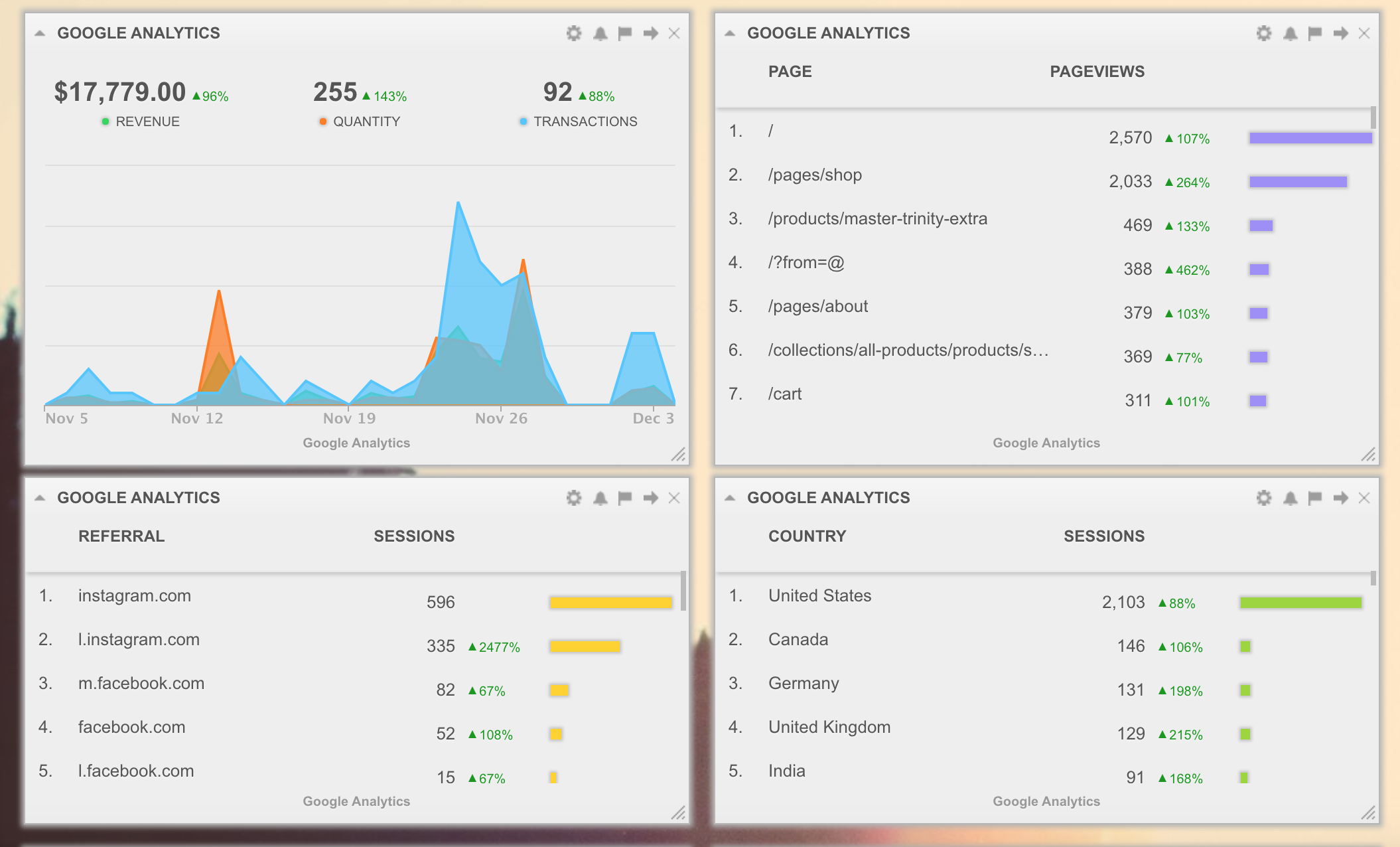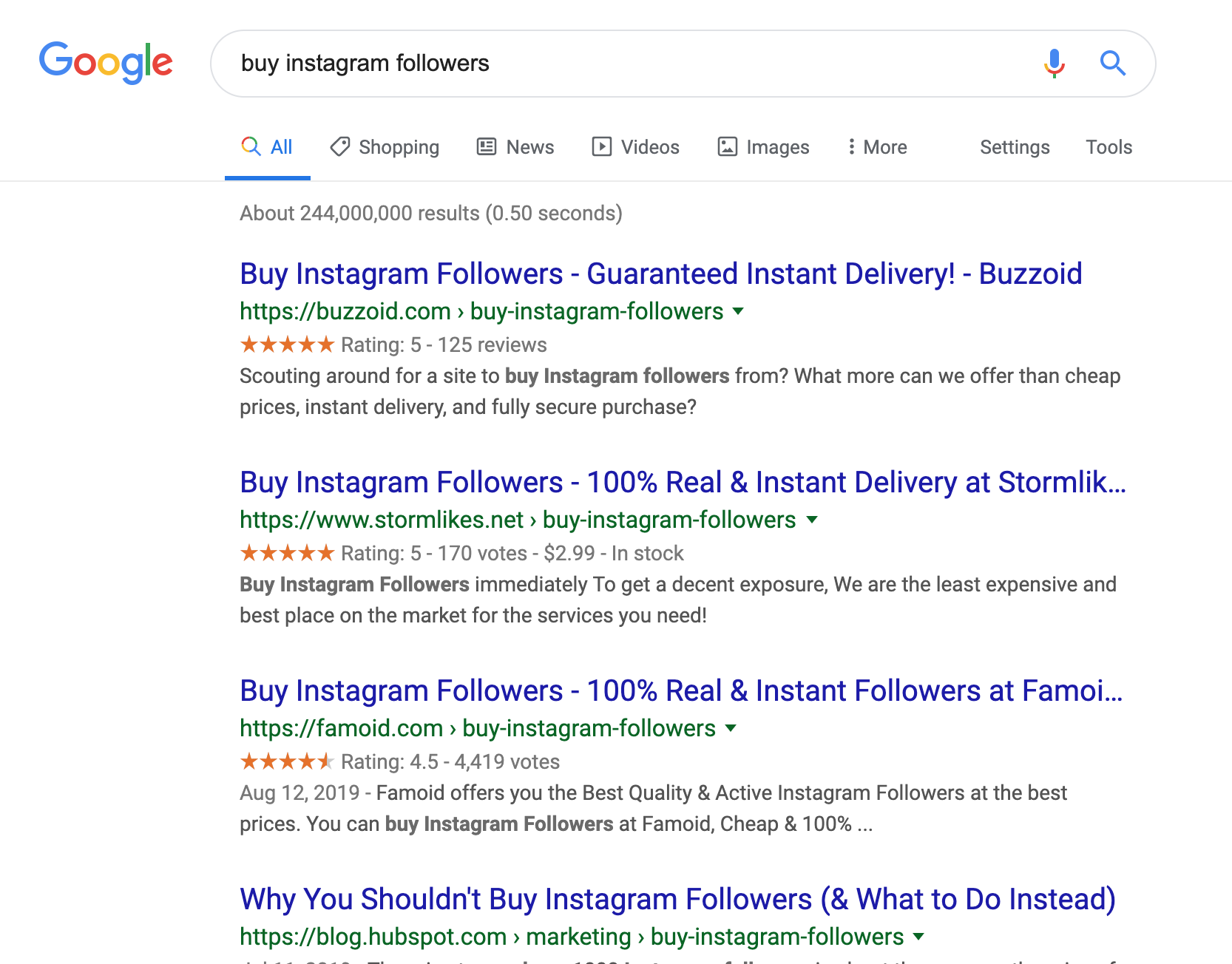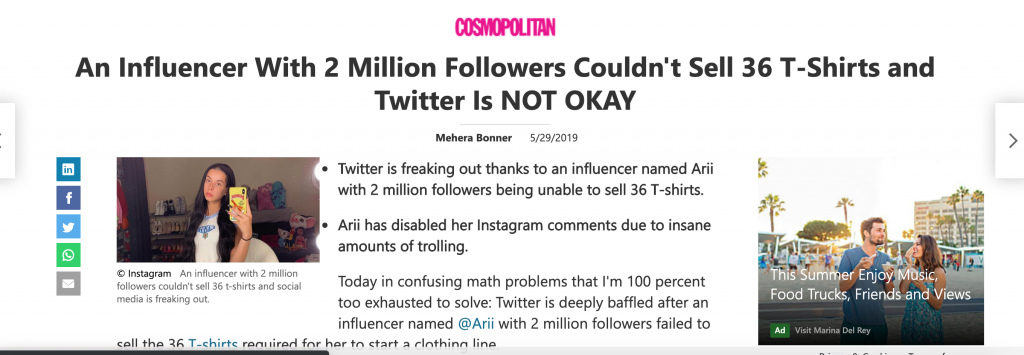“How much of the money have you spent,” the client asks. It’s day 28, and we have 2 days left to deliver 22,100 installs.
Acting cool as a bead of sweat rolls down my forehead, I reassure them it’s all good, explain that we’ve spent ~$50,000 paying influencers, and casually ask for a “few days” of extension. Thankfully, they agree.
A few more days to figure something out, and a slightly smaller chance we have to pay back the 50K out of our own pockets and go deep into the hole.
At this point, the campaign had gained only 400 installs out of 22,500 promised, and our team had only hours left to not only figure something out but orchestrate and launch it.
At this point, the team had recruited 200 influencers, and tested over 800 messaging and creative combinations. Nothing was working.
Audiences as large as 10M followers and a measly 400 installs? We needed a saving grace, fast.
How did we get ourselves into this?
I’ll explain in a minute, but for now, the only thing you need to know is this: influencer audiences are not always what you think.
Sidebar: thankfully, on day 31, 18,000 installs rolled in.
The Upsides and Downsides of Influencer Marketing
The influencer marketing space is amazing, and it is just what the world needed.
With ad platforms sucking advertisers dry, a highly personal tool to market directly to customers couldn’t have come at a better time, especially one that can have such a high ROI.
Now, having done digital marketing for 10 years and influencer marketing for 4, I’ve been there to observe the genesis of the space.
In 2018, we ran an eCommerce influencer campaign for our client. For every $100/story post we paid our influencer with 120K followers, the client gained $1,800 in sales. For their simple 80% profit product, in their case, they got 14.4X ROI.

Things don’t always go that well, but the space still has a ton of potential.
Influencer marketing is critical to every marketing mix, and in some cases should represent as much as 80% of the marketing budget.
You’re a smart businessperson. You know how important data and metrics are.
But, that’s the weird thing about influencer marketing. In many cases, the “data” isn’t always what it seems.
In an earlier post, I mention how a hacker sent me 350 likes to a photo on my Instagram with the click of a button. All real user accounts that his platform was logged into. He has access to 11,000 social accounts that he could use for such a thing.
Taking it a step further, a quick Google search reveals how easy it is to buy non-authentic followers.

Followers, likes, and comments are not an indicator of influencer/audience quality. No surprise, Instagram has removed the ability to see other’s likes/follower counts in many regions.
Another story came out recently about an influencer with 2.6M followers who couldn’t sell 36 t-shirts to her audience. She may have had some non-authentic accounts following her, or the audience simply lost interest in her content and disengaged.

In this article, you’ll learn not only how to find the RIGHT numbers to focus on, and where to get them, but how to actually recruit quality influencers who will drive real engagement and real sales.
Otherwise, you could end up in a scenario where you’ve spent $50K and gotten .05% conversion rate, just like we did. Or, you could play it right, and make that conversion rate as high as 80% in some cases.
One Quick Note on Influencer Campaigns
From the high level, before getting into any influencer campaign, you need to know your objectives. Here’s a simple breakout:
Decide on the goal of your campaign:
- Reach and awareness
OR - Sales and leads
Influencer type you want:
- Nanos (500 – 5,000 followers) are good for super-niche products
- Micros (5k-200k followers) are the best balance of reach, conversion and authenticity
- Macros (1m+ followers) are best for branding, reach and awareness
Some other common benchmarks:
- For a small business, start with 3-5 influencers
- For medium/large businesses, anywhere from 10-20 influencers can work, but sometimes as high as 100 or 200
These are just benchmarks, though. If you want specifics, just reach out on Twitter @tcgstyle and I’ll provide ideas.
Here Are the 3 Steps to Finding and Activating High–Quality Influencers
Step 1) How to Identify Authentic Audiences That Fit Your Niche
This is by far the most important step of your marketing process. Before getting in bed with someone, you really want to know if they’re a fit.
This is the “qualitative” stage of recruitment”. In step 2, we’ll cover the quantitative component.
Here are the key factors for analyzing and recruiting quality fit influencers.
- Not solely an Instagram influencer.
- Those who started with blogs and Youtube channels typically have more say over buying power among their audience
- Niche specialty. “Travel influencer” doesn’t necessarily mean they will help you sell.
- However, a travel influencer who has traveled to Italy many times and released local guides is much more likely to send travelers to a local coffee shop in Rome.
- Polarizing audience: it’s important that your influencers have a passionate audience, and are willing to speak their honest truth, and take a hard stance for, and against certain things.
- This means more “die-hard” fans
- Engaged audience: look at each comment on their posts. Are they generic or pointed comments?
- “Love this!” is a generic, non-authentic comment, versus “Do you use this face cream at night or in the morning?”, which is a “focused comment” as they’re called.
- On the surface, from basic browsing, you should check out their profiles and get a feel for how intimate they are with their audience.
- If you see red flags, take notice.
Step 2) Work With Talent Managers to Scale Your Efforts
Once you have influencers you think could be a match, it’s time to get gritty with them.
For a 5- to 10-influencer campaign, our standard process is to make a list of 100 and contact all of them. Then, hone to 40 prospects, 30 likelies, and 20 finals. 10 will get a contract, while 10 will be on standby.
It’s hard to communicate with 100 influencers, or even 40 at once, so often times it makes sense to connect with a talent manager who has access to a lot of talent/accounts.
Our talent manager partners run anywhere from 5 and 20 influencer accounts normally and have access to around 5-10M followers.
So make it a priority to find out who the managers are and have your business dealings with them. They’ll also be better at negotiating, getting posts live on time, and handling boring stuff like payments and invoices.
Step 3) Understand the REAL Numbers and Make Your Selections
Once you have conversations going with your prospective influencers, it’s vital you get the real numbers.
DO NOT sign any influencer who hasn’t shown you their key performance indicators and analytics.
Before Facebook closed its data API, our head of influencer marketing developed software that scanned Instagram bios and measured “click-through rate” on “Link in Bio”. This is THE most important metric you need to scan for.
If people aren’t actually clicking when the influencer issues a call to action, you’re not going to make any sales or drive conversions. Since then, the API was shut down and we had to sunset the software.
But, we kept all the data we collected and have historical performance data on most influencers in our network. You may want to keep records of the same.
So here’s what to look for when building your data story:
- Clicks in bio: the most important metric. If they’re not clicking, they’re not buying. Measure it on a time frame, as a percentage. Say, 5 clicks per day, for every 100 impressions? That’s 5% CTR.
- Quality of comments: as noted above, make sure they’re focused comments, even if only 20 or 30.
- You don’t need to sell 1,000 products on each post. Quality over quantity.
- Geolocation of followers: make sure you can service or ship to people in their regions.
- If they have 80% followers from India, which is really common, a lot of them are likely bots due to “like farms”. Beyond that, they may not be in your target audience
- Male / female balance: if you have a lip gloss kit, make sure your audience isn’t 80% men.
- Unless, of course, you’re trying to get men to gift it 😉
- Scan their profile and see if they’ve done paid posts before.
- If they’re too saturated with ads, the audience could be “tired”. This is what happened with the story I told at the beginning of this article.
- If they have done paid posts, ask them if they have any sales data from those campaigns
So, as you can see, it’s not really as simple as “one size fits all”.
Instead, you need to really analyze their audiences closely around your exact objectives, products/services, audience tone and connectedness, and more.
If you can tune these factors well, you can see some crazy ROI from influencer marketing. And, of course, it feels great to support creatives.
This is a Contributor Post. Opinions expressed here are opinions of the Contributor. Influencive does not endorse or review brands mentioned; does not and cannot investigate relationships with brands, products, and people mentioned and is up to the Contributor to disclose. Contributors, amongst other accounts and articles may be professional fee-based.

